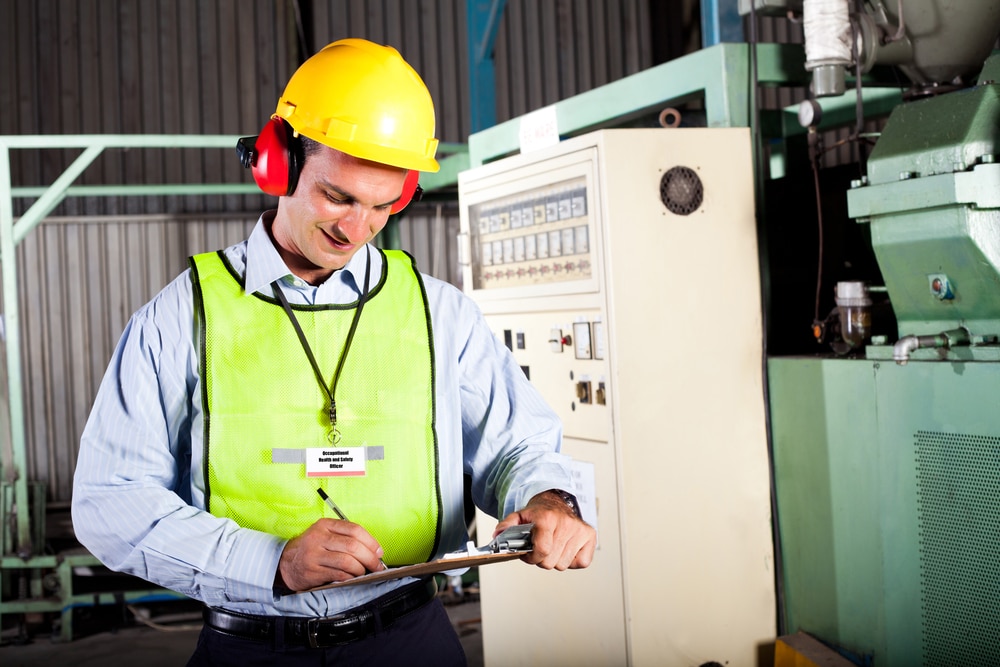No matter your place of work, there are a variety of workplace hazards that you should be aware of. With these in mind, you should be able to work comfortably knowing what workplace hazards to look out for.
What is a hazard in the workplace?
A workplace hazard is any physical or mental obstacle, tool, or vehicle that can cause danger or personal injury to an employee in the workplace. There are numerous types of workplace hazards, too many to list here, but being aware of the concept and the most common types will go a long way to avoiding workplace accidents.

Common workplace hazards
Regardless of your place of work, there will always be onsite workplace hazards that you should be aware of. While your employer must minimise the risk of workplace hazards, you should always be aware of their potential.
Some workplace hazards may be physical dangers that crop up in your workplace environment, others might be physical injuries you could suffer as a result of poor work posture and habits.
A few examples of common workplace hazards could include:
- Loose objects in the work environments
- Repetitive Strain Injury (RSI) from bad typing posture
- Bags poking out from under desks
Of course, there are far more serious workplace hazards that you should be aware of too. So, to avoid potential hazards in the workplace, it’s always a good idea to carry out a risk assessment of your work area when possible.
Below are four risk assessment boxes you can tick to help reduce workplace risk, increase health and safety, and prevent unnecessary injuries in the workplace.
1. Physical Hazards in the work environment
Even in an office environment, it’s really important to look out for potential physical hazards in the workplace that might cause injury. But in busy spaces, it’s even more important.
With warehouse work, for example, forklifts, equipment on the go, blocked entrances, and obstructed pathways all create various workplace hazards that can pose a risk to you.
How to prevent physical hazards at work
Here are a few other potential physical hazards in the workplace, and things you should bear in mind to lessen their risks:
- Overloading the top of your cages/containers creates unnecessary risks. Such oversights can set off sprinklers or restrict access through low-hanging doorways.
- Cords and wires require frequent review and risk assessment. Loose cords can slow down your environment and you should always replace frayed cords, which can create an unnecessary health and safety nightmare.
- If possible, commit to reducing the number of confined spaces you need to operate in to avoid clutter.
- Ensure you have a record of any safety equipment’s expiration dates and carry out regular reviews to ensure they’re up to scratch.
2. Harassment, bullying and psychosocial hazards
This is perhaps one of the most overlooked workplace hazards, but linking mental well-being and physical well-being is an important piece of assessing hazardous workplace conditions.
Nowadays, we’re far more aware of the effects of harassment, sexual misconduct, and bullying in the workplace. If an action can alter an employee’s mental well-being, that action needs to be addressed as a damaging hazard.
How to prevent psychological workplace hazards
Here are a few common psychological workplace hazards to be aware of, and potential solutions:
- Develop thorough, comprehensive policies to deal with each kind of psychosocial hazard.
- Make certain the process to report a violation and maintain compliance does not create new levels of workplace hostility.
- Take precautions to ensure unreasonable workloads aren’t being assigned to single individuals.
- Ensure there is buy-in to handling psychosocial hazards from the top of the workplace organisation down. As a result, on-site buy-in from teams will be more likely to happen.
- Above all, you should treat any psychosocial and on-site mental hazards like physical hazards. Both can lead to punitive and reputational damage to your worksite.
3. Ergonomics hazards and falls from heights
Trips, slips, and falls are some of the most widely encompassing safety hazards. Moreover, it’s a highly relevant one in the UK. Between 2018 and 2019, the HSE reported some harrowing figures regarding ergonomic hazards, including:
- In 2017/18, over 110,000 non-fatal workplace injuries were due to handling, lifting, or carrying heavy objects.
- Falling from height caused 40 workplace deaths.
- Moving vehicles such as forklifts caused 30 fatalities.
- Coming into contact with dangerous machinery resulted in 14 deaths.
How to prevent ergonomic hazards at work
To ensure that these potential hazards in the workplace can be avoided, the following are a few things to bear in mind:
- Educate your workers in safer working practices and aim to keep it simple. Inform your workers, but don’t overload them with information.
- Find safer, perhaps even more practical, scenarios that remove unnecessary work at height scenarios, such as poles for window washing.
- Workers should have a say in addressing manual handling practices that:
- Reduce strain
- Increase regard for safety, and
- Minimise burdensome workloads
4. Chemical Hazards
Out of all the common hazards in the workplace, chemicals injuries are the most dangerous. They can also be incredibly hard to spot in some scenarios. Chemical hazards are defined as any “hazardous substance that can cause harm to your employees.”
Symptoms of chemical hazards can include skin irritation, occupational asthma, dizziness, and headaches. But that’s just the beginning. Therefore, you should err on the side of caution by having as few chemicals on-site as possible.
Too often, the risk of chemical hazards increases simply because they go for a long stretch of time without being used. Thus, an atmosphere of ignorance and underappreciation can set in.
How to prevent chemical hazard accidents
To help mitigate the risks associated with on-site chemicals, you can do some of the following:
- Strive to have as few chemicals on-site as possible – it makes life safer, reduces removal expense, and minimises the risk of breaking the law.
- Create and maintain a thorough inventory of the on-site chemicals needed for your warehouse, especially regarding expiration dates.
- Along similar lines, ensure you order only what you need. Chemicals that fall out of date aren’t easy to get rid of, and an overabundance of them can lead to fines and penalties.
There are, of course, many more common hazards in the workplace that you should keep an eye out for no matter your place of work. When you sit down to write your risk assessment, take time to think about every common workplace hazard you could include.
And if you have suffered an accident at work due to common hazards in the workplace, you may very well be entitled to compensation. Get in touch with the team at The Compensation Experts today to see what your claim might be worth.
About the Compensation Experts and Common Workplace Hazards
This post is part of our ongoing series covering the issues to understand a workplace injury or work-induced psychiatric illness. Our goal is to keep you informed on the latest issues and risks involved with workplace injury claims.
Be sure to read more about this topic, including:

